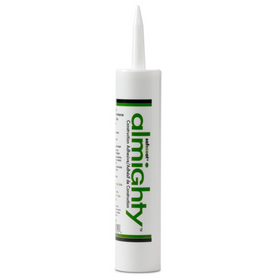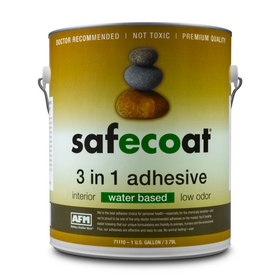
Tips to Build and Finish an Off-Grid Shipping Container Home
Last Updated: Apr 9, 2025A growing percentage of young people across the country are choosing to avoid the traditional 30-year mortgage attached to the prototypical 2,500 square-foot house in the suburbs. Due to economic uncertainties and new ecological awareness, more young people are searching for do-it-yourself housing options that focus on using recycled materials and limiting the square footage of your home to reduce energy demands. The lower price tag is an added advantage.
Shipping container homes are usually considered an inexpensive way to “up-cycle” abandoned remnants of globalized trade into a sustainable home. The initial price tag on one or more used shipping containers might make you salivate at a home you can pay for without any mortgage. However, there are several hidden costs associated with shipping container homes, especially if you decide to contract out much of the finishing work. In this short article, we will look at how you can build and finish an off-grid shipping container home by yourself, with a price tag that almost anyone can afford.
Table of Contents
- Choose Your Container Wisely
- Two DIY Foundation Types
- Doors, Windows, and a Roof
- Insulation and Walls
- Solar Panels and Rainwater Catchment
- Interior Creativity

Choose Your Container Wisely
It should be evident that an essential part of this type of home is the shipping container itself. While images of several shipping containers stacked on top of each other might make a home look like a piece of modern art, these homes are going to be much more expensive because of the welding involved. Unless you understand the art of welding, you will most likely have to contract a welder to connect the different containers used in your home. The more containers that make up the floor plan of your home, the more welding that will be involved, and the higher the overall home cost.
If the philosophy of tiny homes appeals to you, one 40-foot shipping container comes out to be 320 square feet of livable space. The “high cube” containers add an extra foot of height for a total interior height of almost eight feet. This extra foot height can be important, especially when floor and roof insulation marginally reduces your interior space. One high cube, 40-foot shipping container costs between $2,000 and $8,000, depending on its condition. One-trip containers will be slightly more expensive because of their newer condition but might save you money in the long run because they shouldn’t have any dents or other structural damage.
When searching the web for shipping containers, look for suppliers that are relatively nearby your region. The farther away from the source your shipping container is, the higher the shipping costs and carbon footprint attached to getting the container to your construction site. If you opt for a home built from a single container, you could have the basic structure of your home for only a couple of thousand dollars.
Two DIY Foundation Types
Once you have chosen your shipping container, you need to build a foundation for the container to sit on. Most home contractors vastly over-spec the foundations for the homes they build by laying substantial concrete slabs that increase the house's price (and the amount of money they make). Fortunately, a homemade from one, 40-foot high cube container does not necessarily need a large slab foundation.
Concrete piers are the simplest (and most inexpensive) type of foundation for your shipping container home. These concrete cubes are reinforced with rebar and metal mesh wire. For a forty-foot container, you would ideally purchase between six and eight of these concrete piers to place at the corners and evenly spaced along the long side of each side of the container. Make sure to put these concrete piers on solid ground (subsoil, if possible).
If you don’t have solid ground to place these concrete piers, another type of simple DIY foundation combined with the concrete pier technique is the rubble trench. A rubble trench is simply a ditch dug out along the perimeter of your shipping container walls. You will have to dig down below the frost line (perhaps impractical in northern states, cut certainly feasible in parts of the continent with mild winters). The ditch is then filled in with gravel leaving you with a solid foundation to cement your concrete piers in place on top of the trench. This foundation offers you a solid foundation, optimum drainage underneath your home because of the thick trench of gravel, and excellent ventilation since your home will sit up off the ground.
To get your container onto the foundation, you can either hire a crane (the easiest, though more expensive option) or rent a rough-terrain forklift for a couple of hours.

Doors, Windows, and a Roof
Once your container is on the foundation, you will need to cut out the doors and windows. A heavy-duty angle grinder should give you enough power to cut through the thick steel of the container. File down any sharp edges that might have remained, and then weld pieces of 2x2 metal frame tubing. Again, if you're not a welder, you might have to hire someone for this part. Follow the same process for installing the window frames. Once your door and window frames are in place, install your windows and doors that conform to the dimensions you have cut out.
While there are virtually limitless roofing options for a shipping container home (aside from leaving it as-is), the most straightforward and most inexpensive option is a low-pitched shed roof. This type of roof can be framed separately from the actual shipping container, and a simple timber-framed structure will add a natural look that combines well with the metal of the shipping container. You can learn more about how to build a simple pitched roof here.
Insulation and Walls
Now that your home has a foundation, roof, windows, and doors, you can get to work on the interior work. You will need to insulate your walls, floor, and ceiling. The simplest way to insulate a shipping container is with spray foam options. This allows you to directly spray the insulation onto the outside and inside of your shipping container. Don't worry; the foam will adhere to the non-uniform surface of the container. However, spray foam is typically made from polyurethane and will off-gas toxic chemicals, especially during the first days after applied. It also usually has a high global warming potential, although some manufacturers are now starting to adopt safer blowing agents.
If you are planning to add exterior siding to your home, opting for rigid board insulation will likely be your best bet, see: Mineral Wool Rigid Board Insulation or Expanded Polystyrene. On the interior walls, you can opt for more natural insulation options such as recycled cellulose from old jeans or even sheep wool, which is a natural fire repellant.

Solar Panels and Rainwater Catchment
If you want your shipping container home to be completely off-grid, you will want to purchase a small solar PV system to power your home. If you are not an expert with electrical wiring, this might be a good option to contract a professional.
Adding a gutter system onto your pitched roof that feeds a water tank nearby your home is an easy way to have a sustainable and steady source of water for your home. A small solar pump can move that stored water into your home for a shower, sink, and toilet system.
Interior Creativity
The interior finishing of your shipping container home is completely up to you. You can choose to add interior partitions or leave the space open. It might be a good idea to replace the wood flooring that comes with your shipping container as these floors are often filled with several chemicals and pesticides to endure a life of traveling the high seas. You can also enhance the living space of your tiny shipping container home by adding on an outdoor deck, which doubles as an outdoor dining room and living area.
For more ideas and tips on Container Homes:
How to Make a Shipping Container Home Truly Sustainable
Pros, Cons, and Cost of Container Homes,
12 Tips to Know Before Building a Shipping Container Home,
8 Container Homes you can Buy Right Now,
Tobias Roberts
Tobias runs an agroecology farm and a natural building collective in the mountains of El Salvador. He specializes in earthen construction methods and uses permaculture design methods to integrate structures into the sustainability of the landscape.










